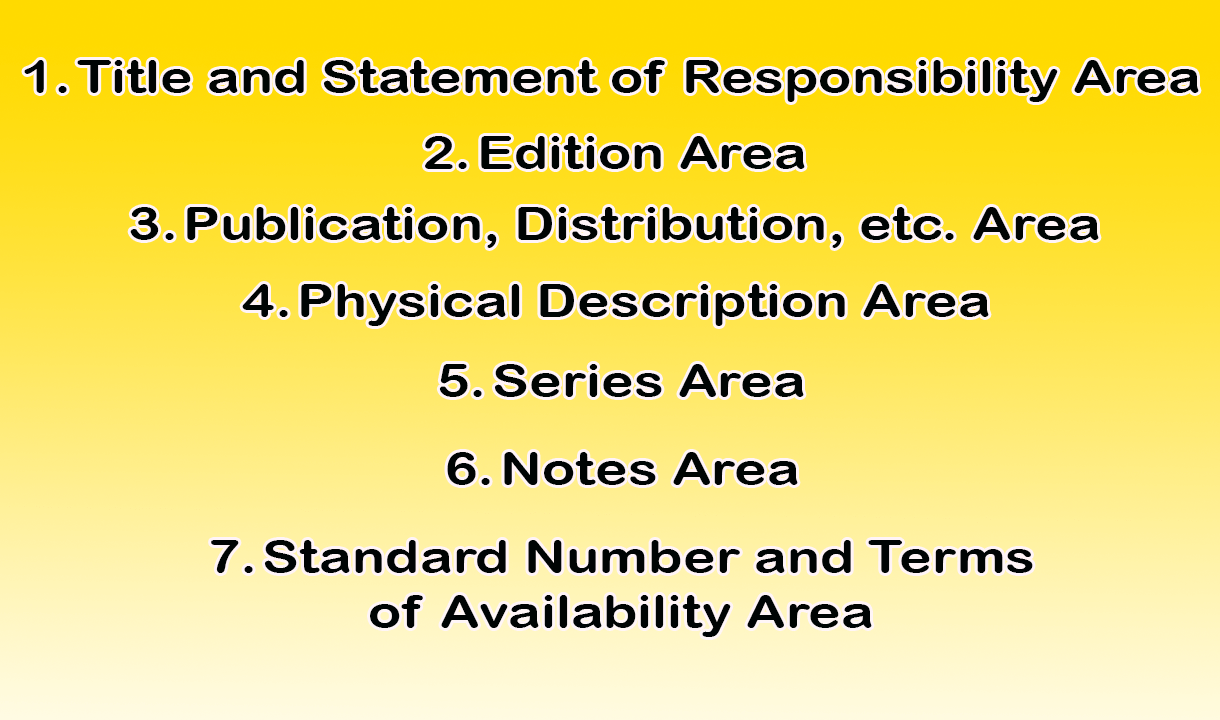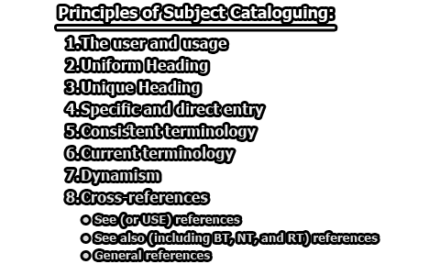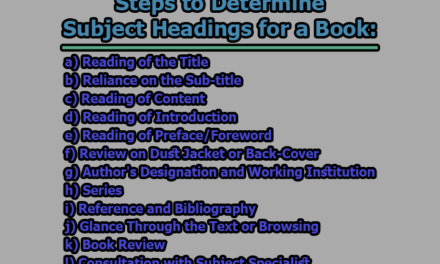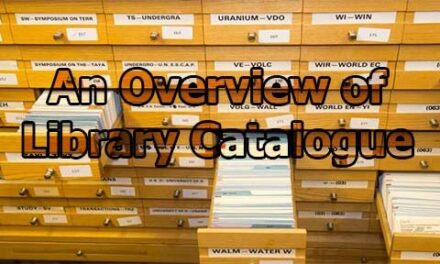Every single library has its resources, organized and well maintained in manner. For this, some rules or regulations must be obeyed. Library maintain its resources by catalogues and these catalogues are prepared to consists of various units’ records. These records are entries which is designed for satisfying a particular approach of user. In the rest of the article we are going to discuss about entry, types of entry and standard bibliographical information that included in the main entry.
Definition of Entry:
Some necessary definitions are given below;
“An entry is an item which one done by written or printed in a diary list, account book or reference book” (Lexico)
“Entry can refer to written records or submission to a contest” (vocabulary.com)
“Heading in index under which a record is located and can be searched and identified through the entry” (Business English Dictionary)
From the above definitions we can say that a library catalogue is a record of the holdings of a library. In order to meet the requirements of users, it is prepared to consists of various unit of records. These unit records are called entries. Each entry is designed for satisfying a particular approach of a user.
Types of Entry:
There are mainly two types of entry which are being;
i. Main Entry: Main entry is the complete catalogue record of an item, presented in the form by which the entry is to be uniformly identified and cited. The main entry is the basic. Each document gets one entry. It is usually an author entry, with sometimes little occupying heading of a main entry. The last section may contain the tracings which indicate headings under which added entries have been prepared for a given document. Main entry includes four sections which are heading, title, imprint and collation.
ii. Added Entry: An added entry is an entry, additional to the main entry by which an item is represented in a catalogue, a secondary entry. These are prepared for subordinate authors like joint authors, editors, translators, and illustrators. These are also prepared for title, series, and subject.
we also find other types of entry which is being;
iii. References: References is a direction from one heading or entry to another. A see reference directs the user from the name of the person or of a corporate body or the title of a work or subject or name of series under which the user might be reasonably expected to look, to the form that has been chosen by the cataloger as a heading or ass uniform title. A see also reference directs the user from one heading to a related heading.
Standard Bibliographical Information that Included in the Main Entry:
AACR2 divides the standard description in the following areas;
Their descriptions are furnished below;
1. Title and Statement of Responsibility Area:
Transcribing the title proper exactly to wording, order, and spelling. Statement of responsibility, which are preceded by a diagonal slash, are recorded in the form they appear in or on the item (AACR2, rule-1.1F)
For examples;
- British India / by Sanjay Gosian.
- The Oxford book of English Verse / edited by Sir Arthur Quiller.
Add an explanatory word or short phrase to the statement of responsibility if the relationship between the title and person or body name in the statement is not clear. (AACR2, rule-1.1F8)
For example;
- Bajjum ballads / [collected by] by Chet Williams
If there is more than one statement of responsibility, record them in the order indicated by their sequence on, or by the lay out of the chief source of information. (AACR2, rule-1.1F6)
For example;
- Letters from AE / selected and edited by Alan Denson ; with a forward by Monk Gibbon
When a single statement of responsibility names more than three persons or corporate bodies performing same function, omit all but the first of each group of such persons or bodies.
For example;
- American’s Radical Right / Raymod Walfinge … [et al.]
2. Edition Area:
When statement of responsibility relates only to particular editions and not to all editions of an item, then it must be included in this area.
For example;
- Introduction to Chemistry / by R.S. Jain. ̶ with additional chapters.
An issue statement of responsibility may be given in addition to an edition statement if the reissue contains the changes. (AACR2, rule-1.2D)
For example;
- 4th, repr. with additions and amendments
3. Publication, Distribution, etc. Area:
Generally, first named placed of publication and publisher given but subsequent place of publication and publishers are included if given prominently or if located in the home country of the library.
For examples;
- London ; New York : Longmans, Green
- New York : McGraw-Hill
Give the name of a publisher, distributor, etc. in the shortest form in which it can be understood and identified internationally. (AACR2, rule-1.4D2)
For examples;
|
: Penguin |
not : Penguin Books |
| : W.H. Allen |
not : Allen (Avoids confusions with other publishers called Allen) |
4. Physical Description Area:
Precede this area by a full stop, space, dash, space or start a new paragraph. Here later prescription has been used. Precede other physical details by a colon. Precede dimension by semicolon.
For examples;
- X, 165p. : ill. ; 18 cm
- : ill. ; 28 cm + 3maps.
5. Series Area:
Series area is preceded by a full stop, space, dash, space, series statement is enclosed in parenthesis.
For examples;
- (Business management series ; 2)
- (Popular science series ; no. 7)
Statement of responsibility appearing in the chief source of information are provided if regarded necessary for the purpose of identification of series.
For examples;
- (Research monograph / Institute of Economic Affairs)
- (Technical memoranda / Beach Erosion Board)
6. Notes Area:
Notes one used to amplify or clarify the more formal elements of the description.
For examples;
- Bibliography : P. 250-291
- Originally published : London : Gray, 1871
7. Standard Number and Terms of Availability Area:
The last one is standard number. It must be included in the last if it has its number.
For examples;
- ISBN 07-2932-029-0
- ISBN 07-2932-029-1
At last we can say that there is a sequence to maintain entries in every single catalogue card which must be maintained. Thus, in a catalogue code developed for a machine system, the concept of a main entry may have to be given up.

Assistant Teacher at Zinzira Pir Mohammad Pilot School and College










